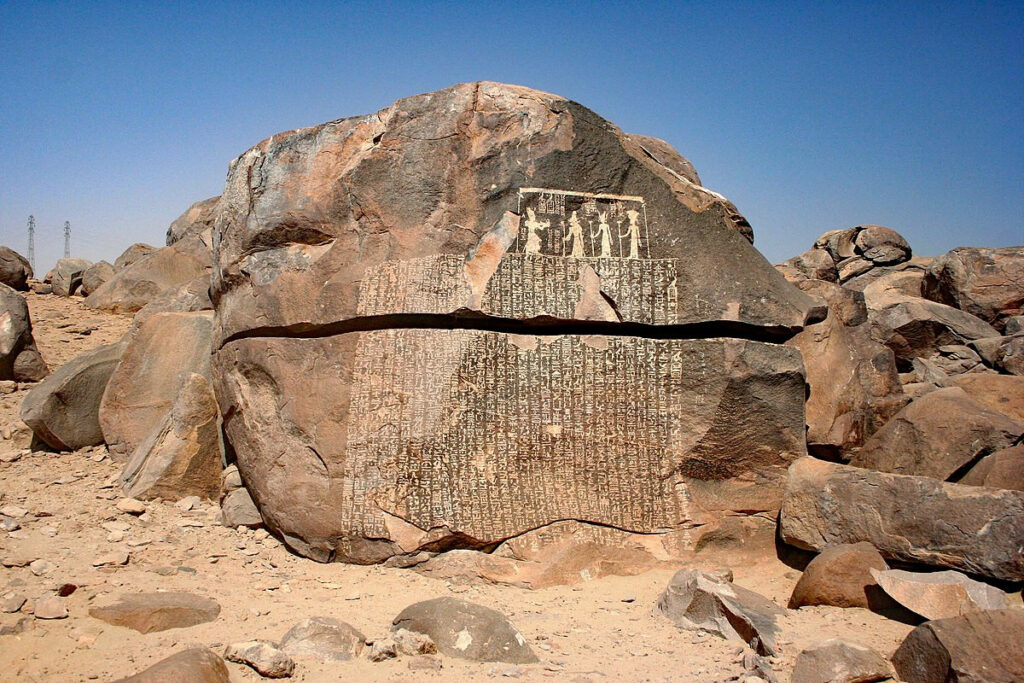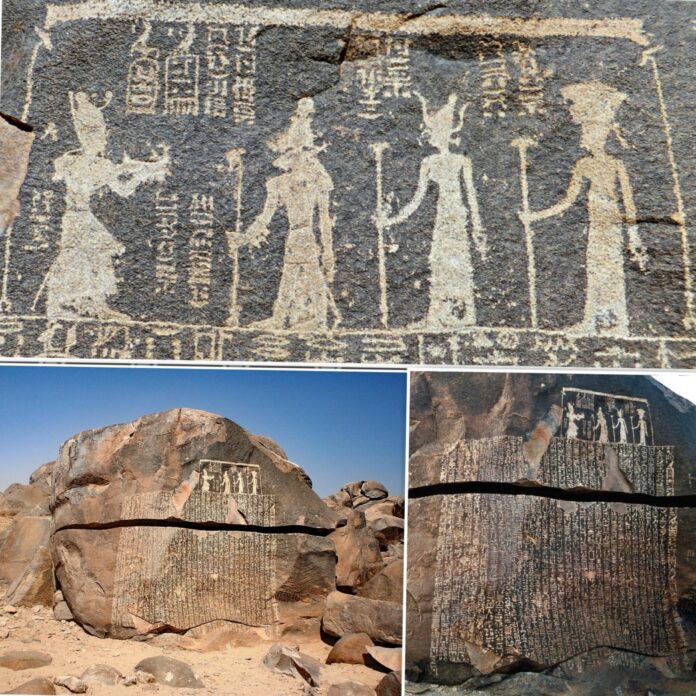
In the heart of ancient Egypt, a remarkable inscription etched in stone narrates the story of a nation’s resilience and unwavering belief in divine intervention. This is the tale of the Famine Stela, a testament to the enduring spirit of the Egyptian civilization.
The Famine that Gripped the Land
During the reign of Pharaoh Djoser of the Third Dynasty, a severe drought plagued Egypt for seven long years. The Nile, the lifeblood of the kingdom, failed to overflow its banks, leaving the fertile lands barren and the people in despair.
The Pharaoh’s Quest for Divine Aid

Amidst the suffering and desperation of his people, Pharaoh Djoser turned to the priestly staff, led by the esteemed high lector priest Imhotep, seeking guidance. Their quest was to uncover the birthplace of Hapi, the god of the Nile, and the deity residing in that sacred location.
The Journey to Unravel the Mystery
Imhotep embarked on a journey to the temple of Thoth, the god of wisdom, in Hermopolis. There, he discovered that the flooding of the Nile was governed by the god Khnum, who resided on Elephantine Island and controlled a sacred spring.
The Dream of Divine Intervention

At the “Joy of Life” temple of Khnum, Imhotep purified himself and offered prayers and offerings. In a remarkable dream, Khnum appeared to him, introducing himself and promising to restore the flow of the Nile. Imhotep meticulously recorded the events before returning to Djoser with the momentous news.
The Restoration of the Sacred Order
Overjoyed by the revelation, Djoser issued a decree, commanding the restoration of Khnum’s temple and the resumption of regular offerings. Additionally, he granted the region between Aswan and Tachompso, along with its wealth and a share of Nubian imports, to the temple of Khnum at Elephantine.
A Testament to Ancient Egyptian Faith

The Famine Stela, believed to have been inscribed during the Ptolemaic Kingdom, stands as a powerful testament to the religious beliefs, struggles, and the quest for divine intervention in ancient Egypt. Its inscription serves as a window into the complexities of Egyptian civilization, highlighting the enduring power of faith and hope in the face of adversity.

